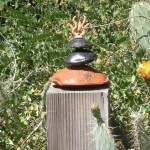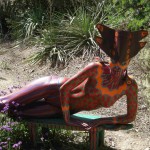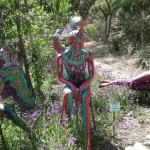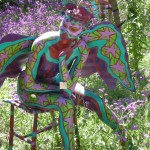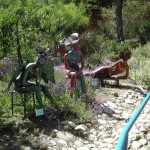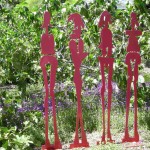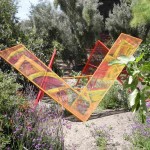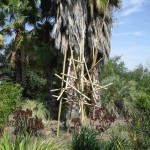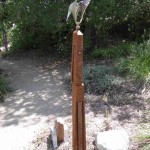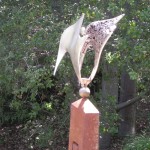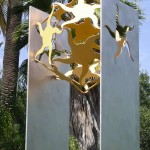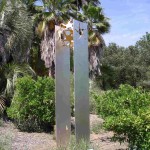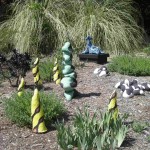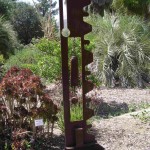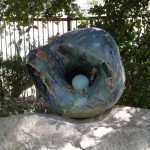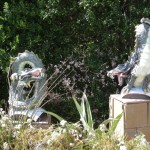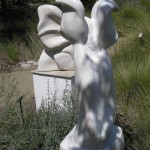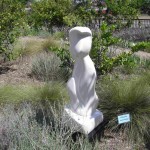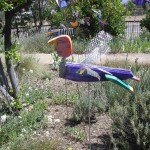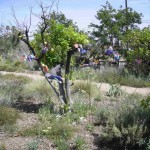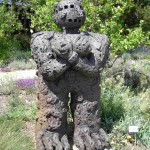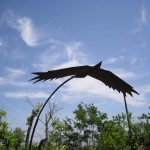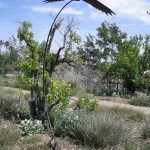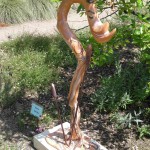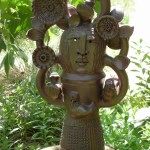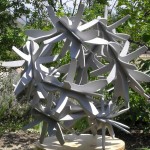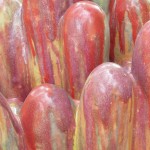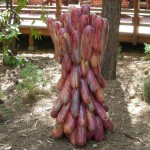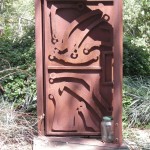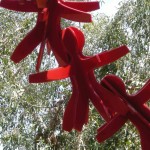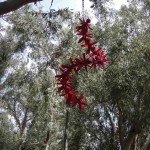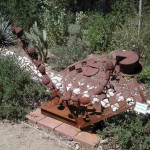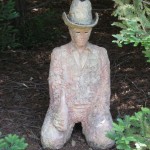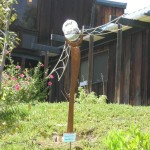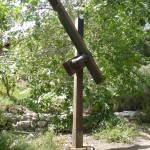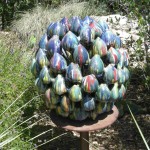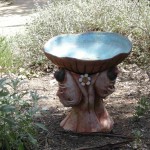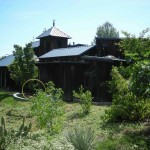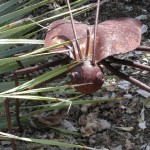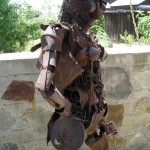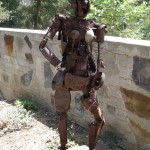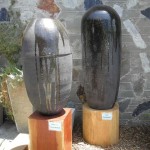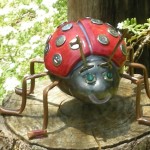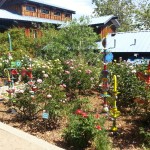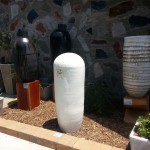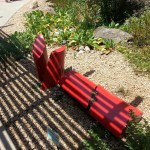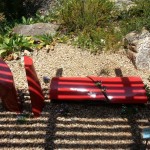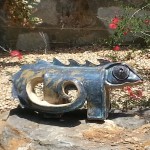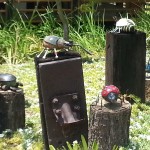Sam Maloof’s name is known to anyone with even a passing acquaintance of woodworking. His handcrafted home in Rancho Cucamonga is a small cathedral of light containing pieces from his illustrious 60 year career. He built it as he built his furniture – in its own time with what he had available, and to suit his family’s needs. It is hard to find one highlight of the tours offered on Thursdays and Saturdays by the Foundation he left behind. For me, it is a dead-heat between the spiral staircase leading to an airy loft and the chance to be cradled in one of his hallmark chairs.
As his fame grew, he and his late wife Alfreda began collecting and cultivating friendships with other artists in greater Southern California. The Sculpture in the Garden exhibit on the Foundation’s grounds until 10 July 2014 is a loving tribute to a couple whose generosity is as renowned as their craft. Over forty artists were asked to pick a spot and to create something for it. They chose well and came up with a wonderful collection of eye-catching pieces, each seeming to sprout from where it sits. The current garden is thanks to Mrs. Beverly Wingate Maloof whom Sam married after Alfreda’s passing.
This is the canonical great way to spend an afternoon. Tour the house and then stroll around the garden, taking each little surprise as it comes along. This exhibit is not for those steeped in theory, looking for profound analytical opportunities. It is an unapologetic celebration. Photography is not allowed in the house. No great loss since Maloof’s creations are documented extensively. Unlike most museums, guests can lay hands on the tables, chairs, and benches. On the grounds, there is no such restriction. Herewith, a sample.
